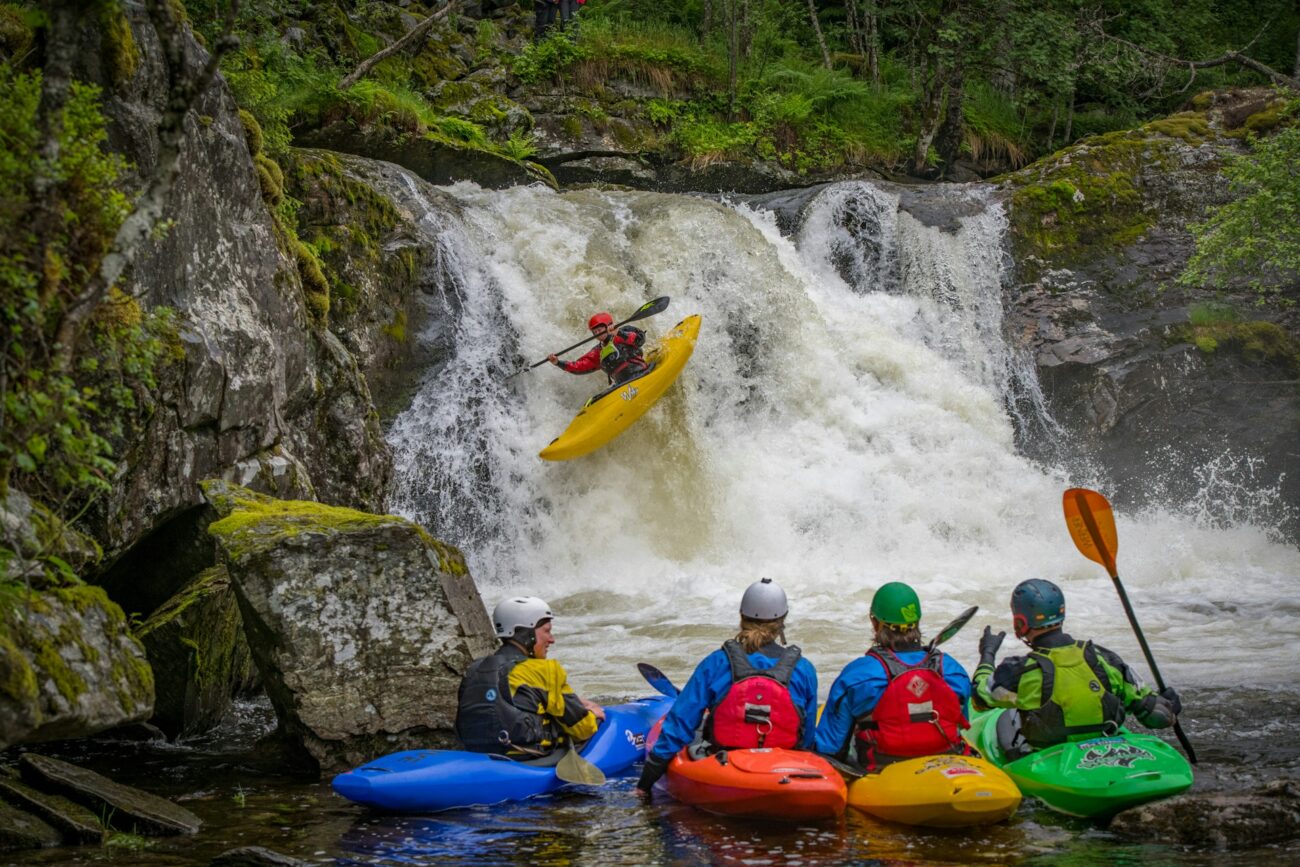There’s something undeniably magical about gliding across water, surrounded by nature’s beauty, with nothing but a paddle and your watercraft connecting you to the experience. But when planning your next aquatic adventure, you might find yourself at a crossroads: canoe or kayak? Both offer unique experiences and advantages, yet they serve different purposes and paddling styles.
Making the right choice between these two popular vessels can significantly enhance your outdoor experience, ensuring comfort, safety, and enjoyment. This comprehensive guide will walk you through all the essential factors to consider when deciding between a canoe and a kayak, helping you make an informed decision that aligns with your specific needs, preferences, and adventure goals.
Understanding the Fundamental Differences
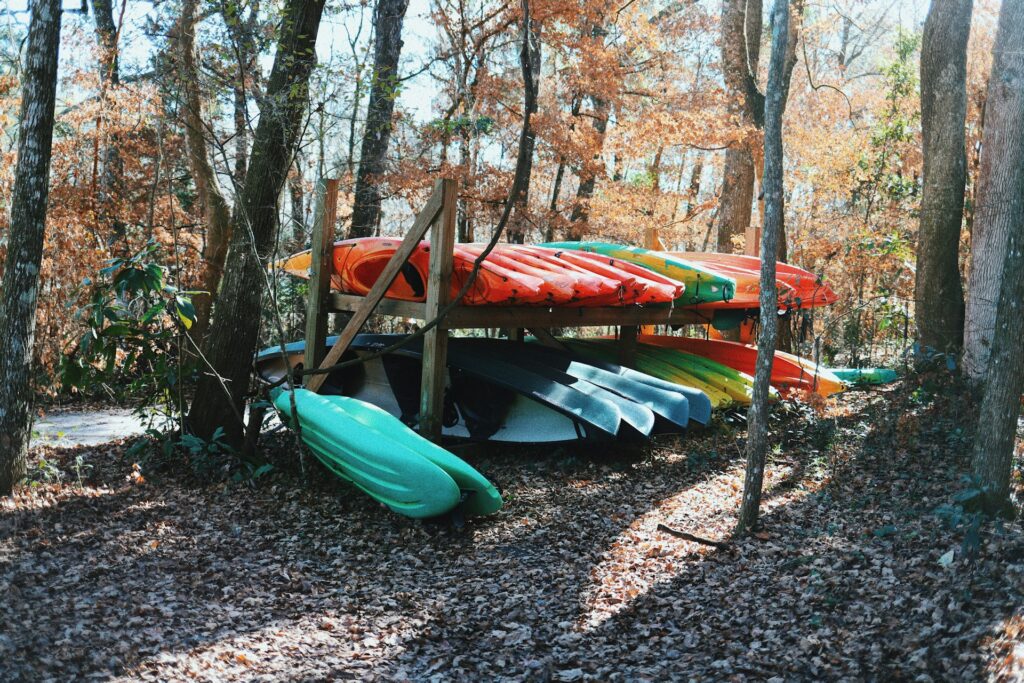
Canoes and kayaks differ significantly in their basic design and functionality, which directly impacts how you’ll experience your time on the water. Canoes typically feature an open-top design with raised sides, allowing paddlers to sit or kneel on benches or seats while using a single-bladed paddle. They’re generally wider and more stable than kayaks, providing ample space for passengers and gear. Kayaks, conversely, have enclosed cockpits where paddlers sit with legs extended forward, using double-bladed paddles that alternate strokes on either side of the vessel.
The enclosed design of kayaks offers better protection from water, while their narrower profile enables greater speed and maneuverability. Understanding these fundamental differences forms the foundation for making an appropriate choice based on your specific needs and the type of experience you’re seeking on the water.
Assessing Your Paddling Environment
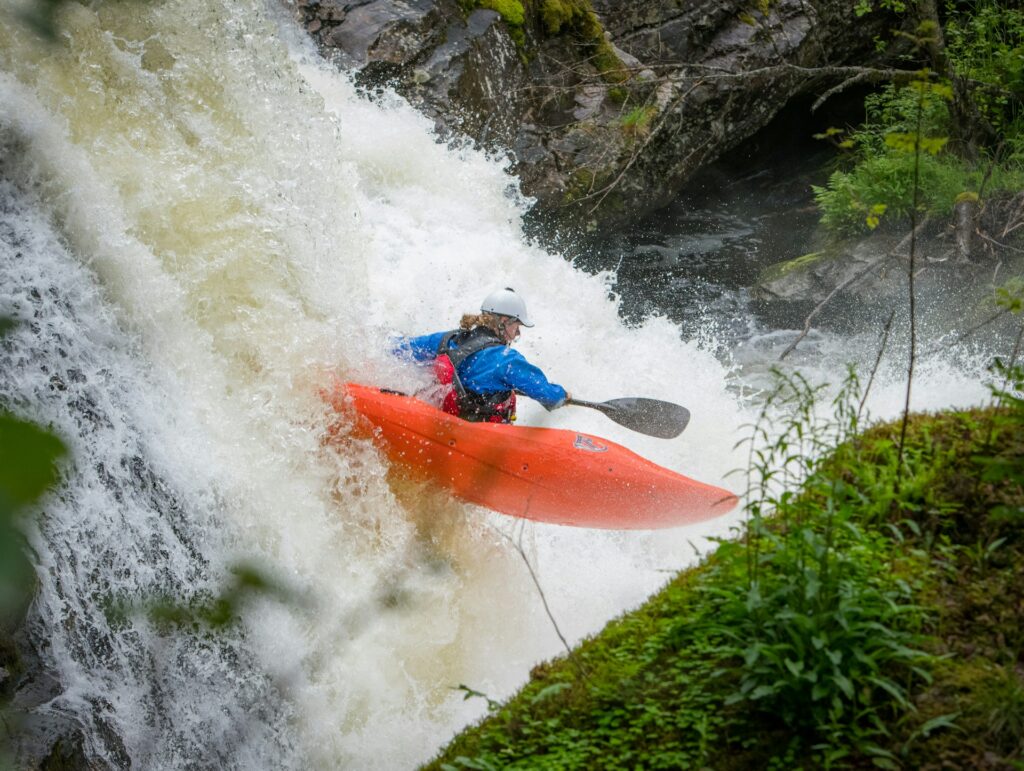
The type of water you plan to navigate plays a crucial role in determining whether a canoe or kayak would serve you better. Canoes excel in calm, flat waters like lakes, slow-moving rivers, and protected coastal areas where their stability and carrying capacity shine. Their higher sides and open design make them less ideal for rough water or windy conditions, as they’re more susceptible to catching wind and taking on water in choppy conditions.
Kayaks, especially sea and whitewater models, are designed to handle rougher conditions with their lower profile and ability to roll upright after capsizing (with proper technique). Their enclosed design prevents water from easily entering the craft, making them superior choices for ocean paddling, faster rivers, or areas with frequent wind and waves. Honestly assessing the water conditions you’ll most frequently encounter will significantly narrow your decision between these two watercraft options.
Evaluating Your Primary Purpose
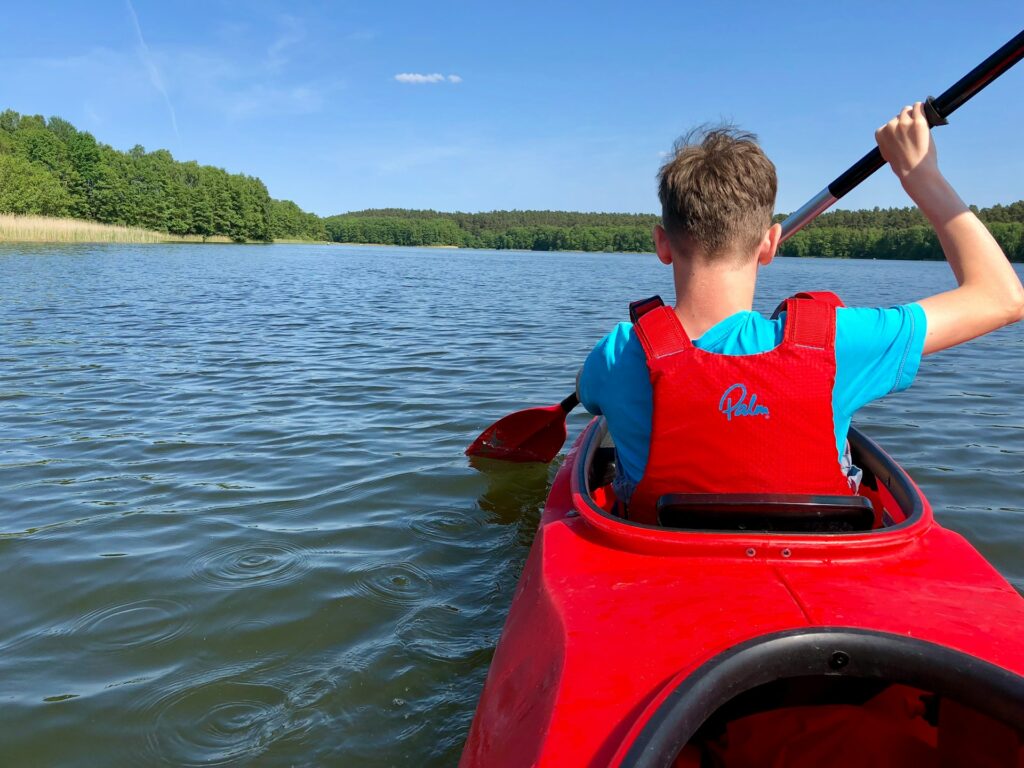
Your intended use for the watercraft should heavily influence your decision between a canoe and kayak. If you’re planning multi-day trips that require substantial gear and provisions, canoes offer unmatched cargo capacity with their spacious open design, making them ideal for camping expeditions, fishing trips with extensive tackle, or family outings requiring coolers and comfort items. Kayaks excel when speed, efficiency, and covering longer distances are priorities, making them perfect for fitness paddling, day touring, or navigating narrow waterways and coastal exploration.
For photography enthusiasts, canoes provide a more stable platform for setting up equipment, while wildlife observers might prefer the quiet approach and lower profile of kayaks. Some specialized activities like whitewater paddling almost exclusively favor kayaks, while others like tranquil fishing on small lakes might be more enjoyable in canoes. Being clear about your primary purpose will lead you toward the vessel that best supports your specific on-water activities.
Considering Physical Capabilities and Comfort
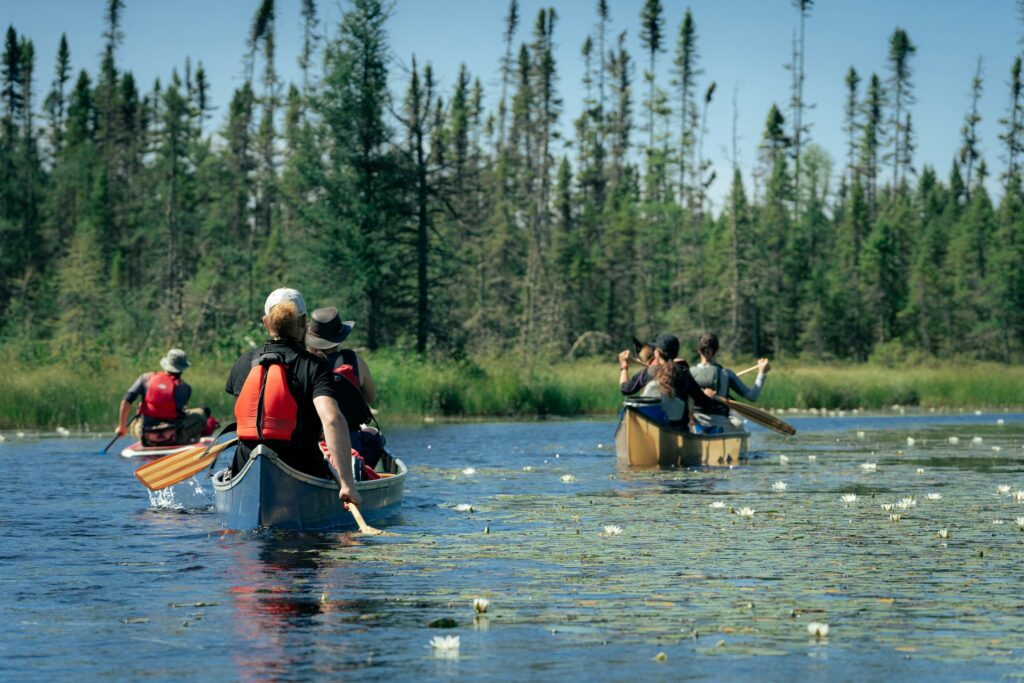
Your physical condition, flexibility, and comfort preferences should factor significantly into your choice between a canoe and kayak. Kayaks require more flexibility for entry and exit, especially traditional sit-inside models where paddlers must lower themselves into a confined cockpit with legs extended forward. This position, while efficient for paddling, may be uncomfortable for those with back issues or limited lower body flexibility. Canoes, with their open design, offer easier entry and exit for most people and allow for position changes during longer trips, making them more accommodating for those with mobility constraints or who prefer not to remain in a fixed position.
The paddling motion differs as well—kayaking uses rotational torso movements with a double-bladed paddle that may be easier on some paddlers’ shoulders, while canoeing employs a J-stroke technique that some find more intuitive but potentially more tiring over long distances. Honestly assessing your physical comfort needs and limitations will guide you toward the option that will provide the most enjoyable experience on the water.
Solo vs. Tandem Considerations
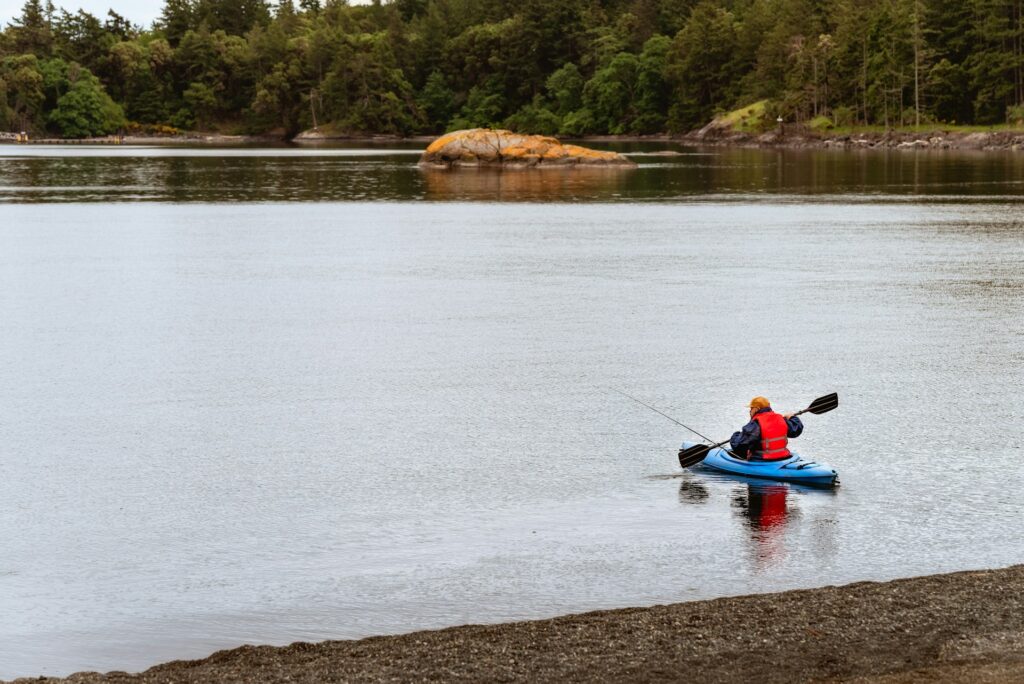
Whether you’ll primarily paddle alone or with companions significantly impacts the canoe versus kayak decision. Canoes naturally excel as tandem vessels, with traditional designs accommodating two or more paddlers comfortably, making them ideal for families, couples, or groups who want to share the paddling experience. The shared workspace of a canoe allows for easy conversation, coordinated paddling, and the ability to distribute workload when fatigue sets in.
Kayaks, traditionally designed as solo craft, offer independence and personal control over your paddling experience. While tandem kayaks exist, they require more coordination between paddlers and don’t offer the same flexibility for movement or position changes that canoes do. For solo paddlers, specialized solo canoes are available but typically require more skill to paddle efficiently than solo kayaks. The social aspect of your paddling adventures—whether you prefer shared experiences or independent exploration—should weigh heavily in your watercraft selection process.
Transportation and Storage Logistics
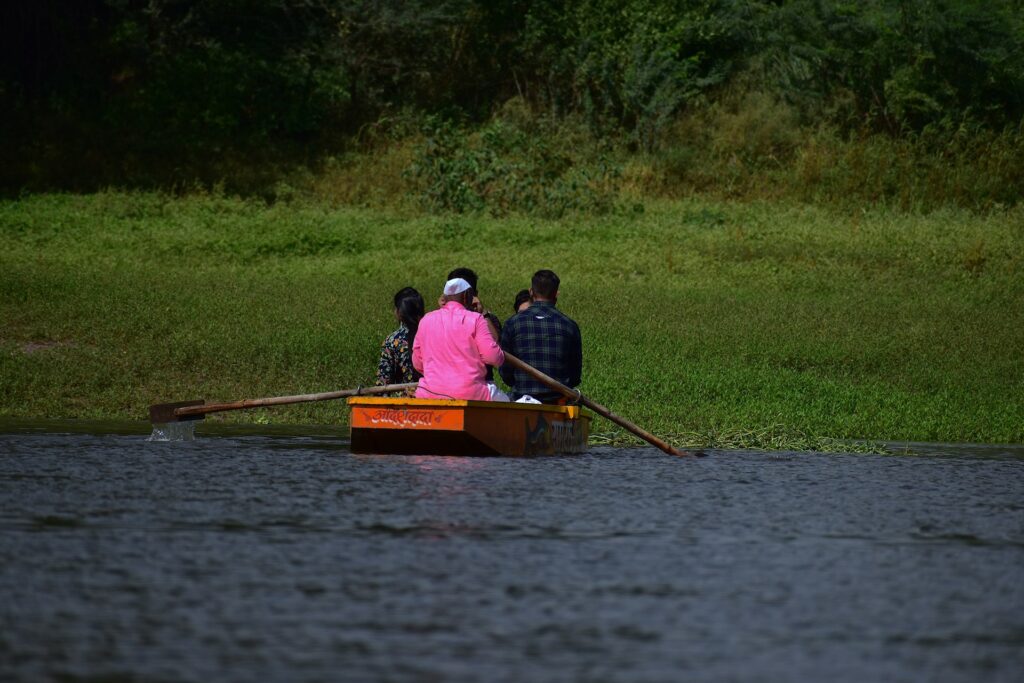
The practicalities of transporting and storing your watercraft deserve serious consideration before making a purchase decision. Traditional hard-shell canoes, while spacious on the water, present challenges in transportation and storage due to their size and weight, often requiring specialized roof racks, multiple people for loading and unloading, and significant storage space at home. Kayaks, particularly recreational models, tend to be lighter and easier for one person to manage, though they still require roof racks or specialized carriers for transport.
For those with limited storage space or transportation capabilities, inflatable and folding options exist for both canoes and kayaks, offering impressive performance while addressing the logistical challenges of hard-shell vessels. Modern inflatable kayaks pack down to the size of a large suitcase, while folding kayaks and canoes can fit in apartment closets or vehicle trunks. Carefully assessing your transportation capabilities, storage space, and how these factors might affect your ability to get on the water regularly will help determine which vessel type best fits your lifestyle constraints.
Weather and Seasonal Considerations
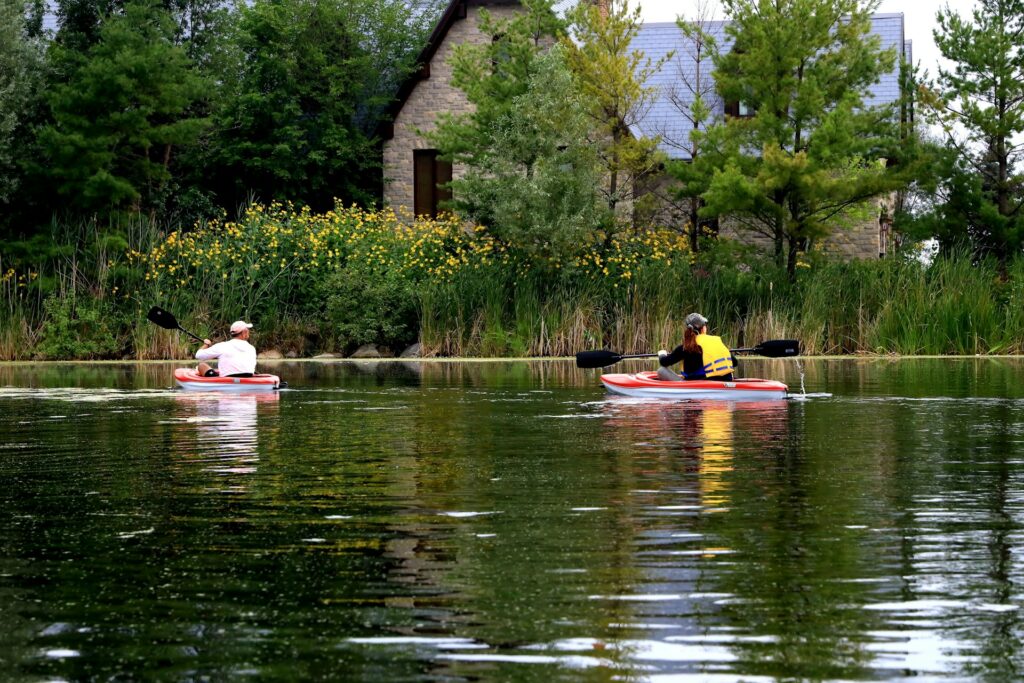
Climate and seasonal conditions in your paddling region should influence your choice between a canoe and kayak. In colder climates or during shoulder seasons when water temperatures remain low, kayaks offer better protection from the elements with their enclosed design, especially when used with a spray skirt that prevents water from entering the cockpit. This enclosed design helps kayakers stay drier and warmer in adverse conditions, extending the paddling season in cooler climates. Canoes, with their open design, leave paddlers more exposed to wind, rain, and splashing water, making them less comfortable in cold or inclement weather.
However, in hot, sunny conditions, canoes provide better airflow and the ability to adjust position for comfort, preventing the trapped heat that can make enclosed kayak cockpits uncomfortable during summer months. Some paddlers in variable climates opt to own both vessels or choose a sit-on-top kayak design that offers a middle ground between protection and ventilation. Realistically assessing the weather patterns and seasonal conditions where you’ll paddle most frequently can help determine which craft will provide comfortable experiences throughout your region’s paddling season.
Skill Development and Learning Curve
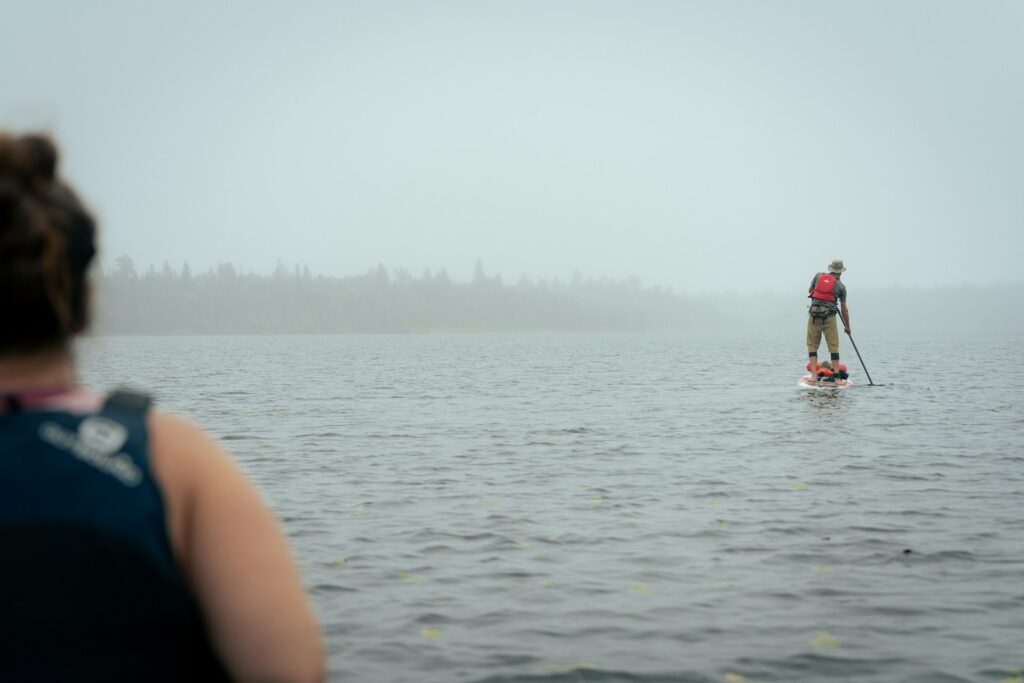
The learning curve associated with each vessel type varies significantly and should factor into your decision, especially for beginners. Recreational kayaks typically offer the gentlest learning curve for complete novices, with their stability, intuitive double-paddle system, and straightforward tracking making basic paddling skills accessible within the first few outings. Entry-level recreational canoes also provide good initial stability, but mastering efficient paddling techniques like the J-stroke requires more practice and refinement. For beginners concerned about capsizing, sit-on-top kayaks offer the easiest recovery, as they simply require climbing back aboard rather than performing complex rescue techniques.
More advanced disciplines like whitewater kayaking or solo canoe paddling present steeper learning curves that demand significant skill development and practice. Consider not just your current skill level but also your interest in developing paddling proficiency—some paddlers enjoy the ongoing technical mastery that certain vessel types require, while others prefer craft that provide immediate enjoyment with minimal skill development. Being honest about your patience for learning new skills and your commitment to practice will help guide you toward the option that matches your temperament and paddling aspirations.
Budget Considerations and Value Assessment
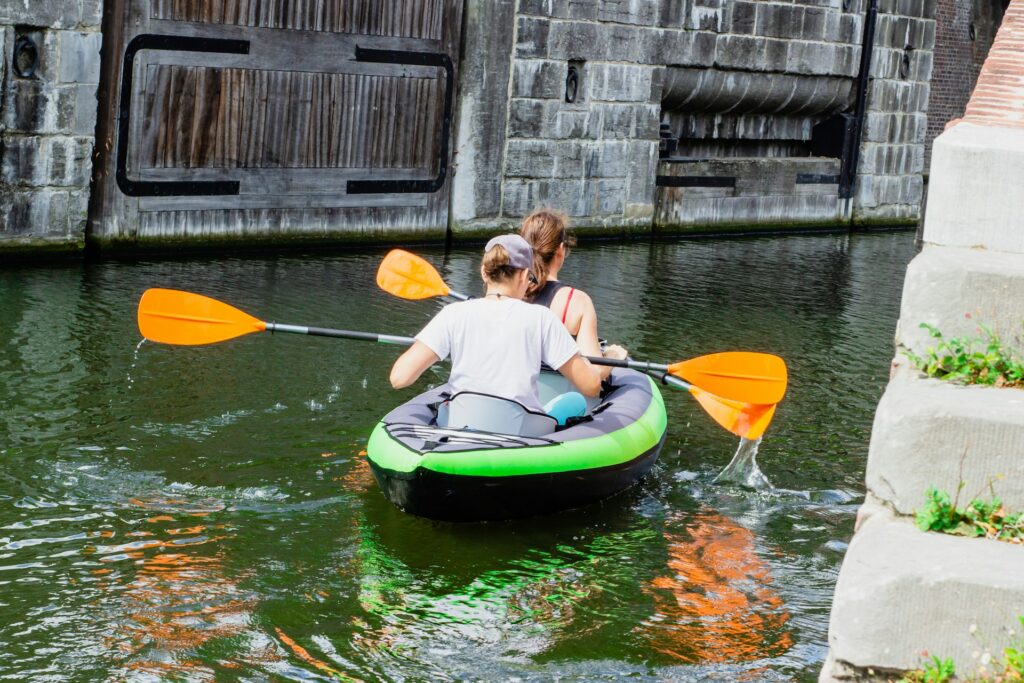
Financial investment varies significantly across canoe and kayak options, making budget an important practical consideration in your decision-making process. Entry-level recreational kayaks typically represent the most affordable entry point into paddling, with basic models starting around $300-500, while comparable recreational canoes usually begin at slightly higher price points due to their larger size and material requirements. As you move into specialized categories—touring kayaks, performance solo canoes, whitewater-specific craft—prices increase substantially, with high-end models of either type potentially exceeding $2,000-3,000.
Beyond the initial purchase, consider additional required equipment—kayaks typically need specialized paddles, potentially spray skirts, and possibly bilge pumps, while canoes require investment in quality paddles, possibly flotation devices, and often portage yokes for land transport. When assessing value, consider longevity and versatility—quality canoes often last decades with proper care and can adapt to multiple uses, while specialized kayaks excel at specific purposes but may feel limiting if your interests evolve. Establishing a realistic budget that accounts for both the craft and necessary accessories will help narrow your options while ensuring you invest in a vessel that provides lasting enjoyment rather than frustration from inadequate performance.
Specialized Variants Worth Considering
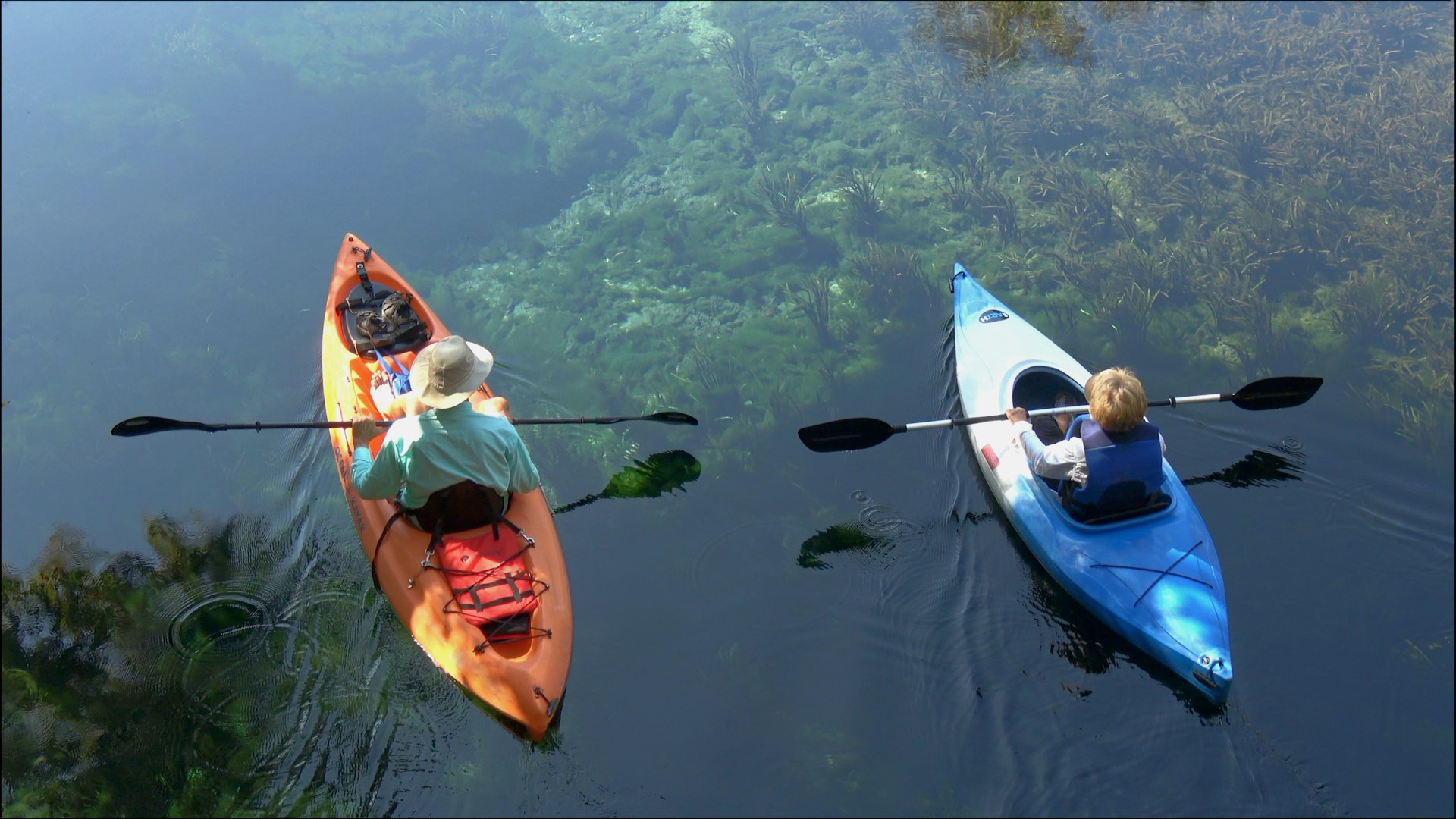
The canoe and kayak market has evolved to include specialized variants that blur traditional distinctions and offer hybrid benefits worth exploring before making your final decision. Sit-on-top kayaks eliminate the enclosed cockpit design, offering easier entry/exit and self-rescue capabilities while sacrificing some of the protection and efficiency of traditional kayaks. Recreational sit-inside kayaks feature larger cockpits that address the confined feeling some paddlers dislike while maintaining better protection than completely open designs. Pack canoes combine canoe hull design with lower profiles and double-bladed paddle usage, offering excellent solo performance with traditional canoe carrying capacity.
Inflatable options in both categories have advanced dramatically, with high-pressure inflatables now offering performance surprisingly close to rigid hulls while addressing storage and transport challenges. Pedal-driven kayaks allow for hands-free propulsion through foot-powered systems, making them especially popular among anglers who value having free hands for fishing. Some manufacturers even offer modular designs that can convert between solo and tandem configurations or adjust seating positions based on your needs for particular outings. These specialized variants might provide the perfect compromise solution if you find yourself torn between traditional canoe and kayak designs, potentially offering the best features of both worlds for your specific paddling scenario.
Testing Before Purchasing
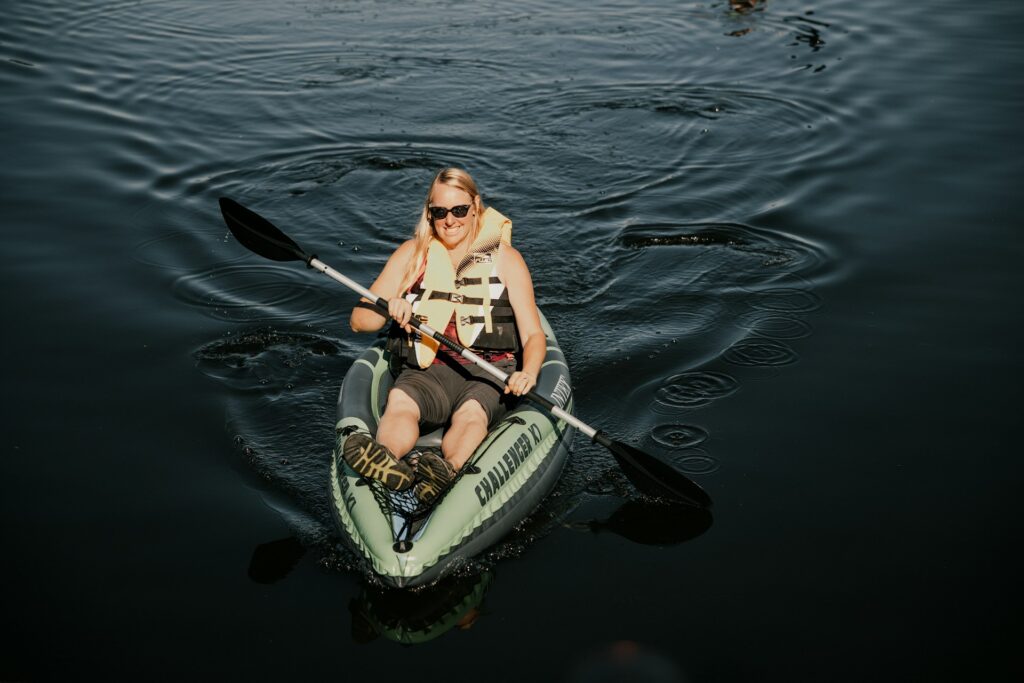
Perhaps the most valuable step in choosing between a canoe and kayak is arranging hands-on experience with different models before committing to a purchase. Paddlesport retailers increasingly offer demo days where potential buyers can test various watercraft under realistic conditions, providing invaluable experiential knowledge that specifications and reviews cannot convey. Many outdoor organizations and paddling clubs also host events where members showcase their vessels and often generously allow interested newcomers to try different options. If these opportunities aren’t available, consider renting several different styles of canoes and kayaks from outfitters over multiple outings to compare experiences directly.
During these test sessions, pay attention to your comfort level entering and exiting the craft, how stable you feel while paddling, whether the seating position remains comfortable after 30-60 minutes, and how the vessel performs in conditions similar to where you’ll primarily paddle. Take notes immediately after each paddling session to record your impressions while they’re fresh. This firsthand testing phase often reveals preferences you didn’t anticipate and helps prevent the disappointment of discovering after purchase that a vessel doesn’t match your needs or comfort expectations.
Long-term Growth and Adaptability

When investing in a paddling vessel, consider not just your current needs but how adaptable your choice will be as your skills and interests evolve over time. Entry-level recreational kayaks, while perfect for beginners, may feel limiting as paddlers develop skills and desire to explore more challenging environments or longer distances. Quality recreational canoes often offer more long-term versatility, adapting to different scenarios from solo day trips to family outings to extended camping expeditions.
Some paddlers find their interests shift dramatically after gaining experience—perhaps discovering a passion for whitewater after starting in flatwater, or developing interest in extended touring after beginning with casual day paddles. Consider whether you’re likely to expand your paddling horizons and whether your initial vessel choice supports potential growth or might require replacement as your interests evolve. This forward-thinking approach might justify investing in a slightly more advanced model than your current skills require, or alternatively, might suggest starting with an affordable entry-level option with the understanding that an upgrade may be desirable as your paddling identity develops. Planning for your paddling journey’s evolution helps ensure your vessel remains a source of satisfaction rather than limitation as you grow in the sport.
Making Your Final Decision
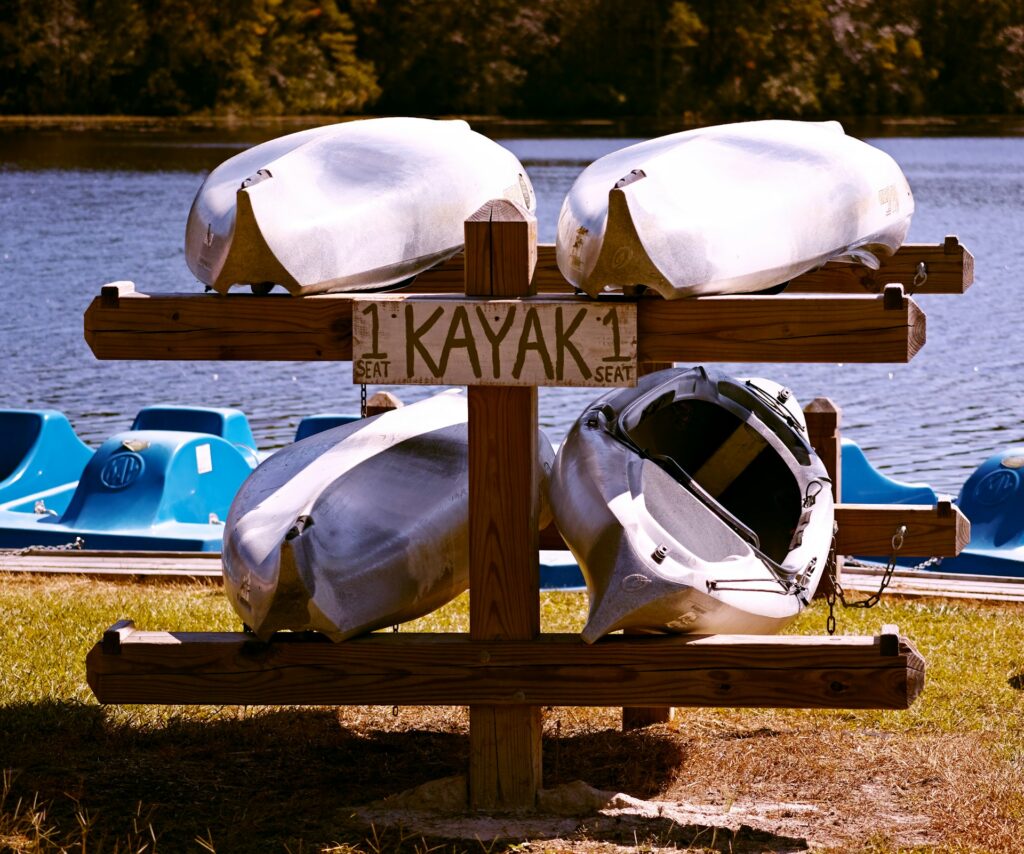
After weighing all the factors, your final decision should integrate practical considerations with the emotional aspect of which vessel sparks more excitement for your paddling future. Create a prioritized list of your non-negotiable requirements based on the factors we’ve discussed—water conditions, primary purpose, physical comfort, transportation capabilities, and budget constraints. Then honestly assess which vessel type best satisfies these critical needs. Beyond the practical assessment, acknowledge the emotional pull toward either option—the craft that makes you more eager to get on the water will likely provide greater long-term satisfaction, even if it requires overcoming some logistical challenges.
Many dedicated paddlers eventually own both canoes and kayaks as they recognize the complementary benefits each vessel offers for different scenarios. If your analysis leaves you truly undecided between equally suitable options, consider which vessel gives you more opportunities to share paddling experiences with others, as the social dimension of paddlesports often provides some of its most rewarding moments. Ultimately, the “right” choice is the one that gets you on the water consistently, comfortably, and joyfully—whether that’s a canoe, kayak, or one of the many specialized variants that blend attributes of both traditional designs.
Conclusion
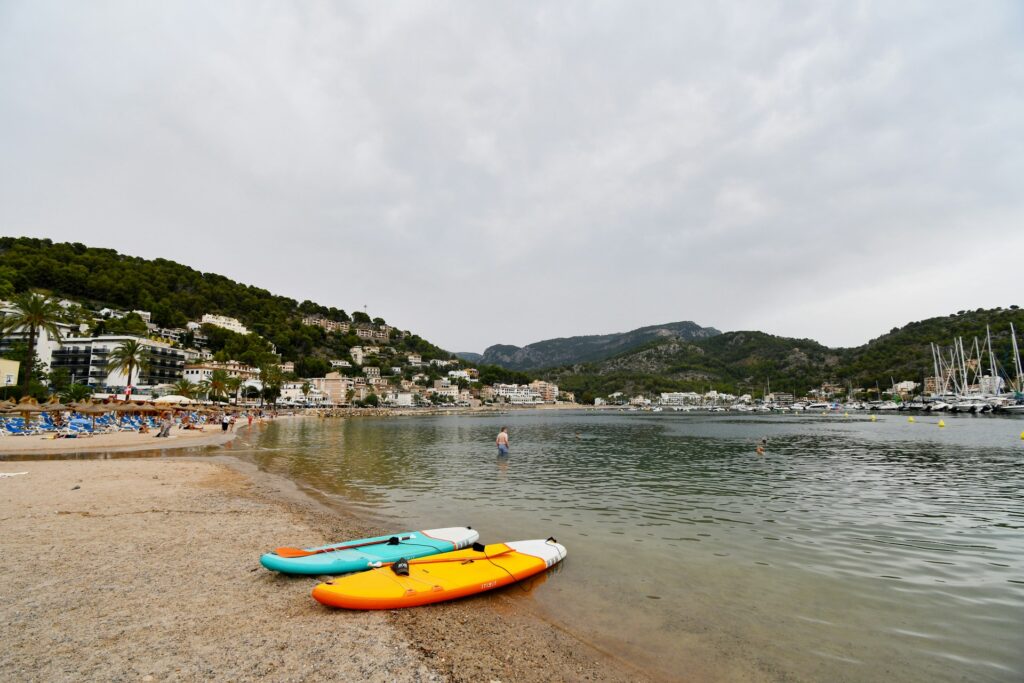
Choosing between a canoe and a kayak ultimately comes down to matching the vessel to your specific paddling style, environment, and personal preferences. Each offers distinct advantages—canoes excel in stability, capacity, and comfort for leisurely exploration, while kayaks provide efficiency, maneuverability, and often better performance in challenging conditions. By carefully evaluating the factors outlined in this guide, you’ll be equipped to select the watercraft that best aligns with your paddling aspirations.
Remember that many passionate paddlers eventually own both types as they discover the unique joys each vessel brings to different water experiences. Whatever you choose, the most important outcome is finding the craft that calls you to the water repeatedly, opening doors to adventures, connections with nature, and the simple pleasure of propelling yourself across the water’s surface with nothing but your own power and a good paddle in hand.

